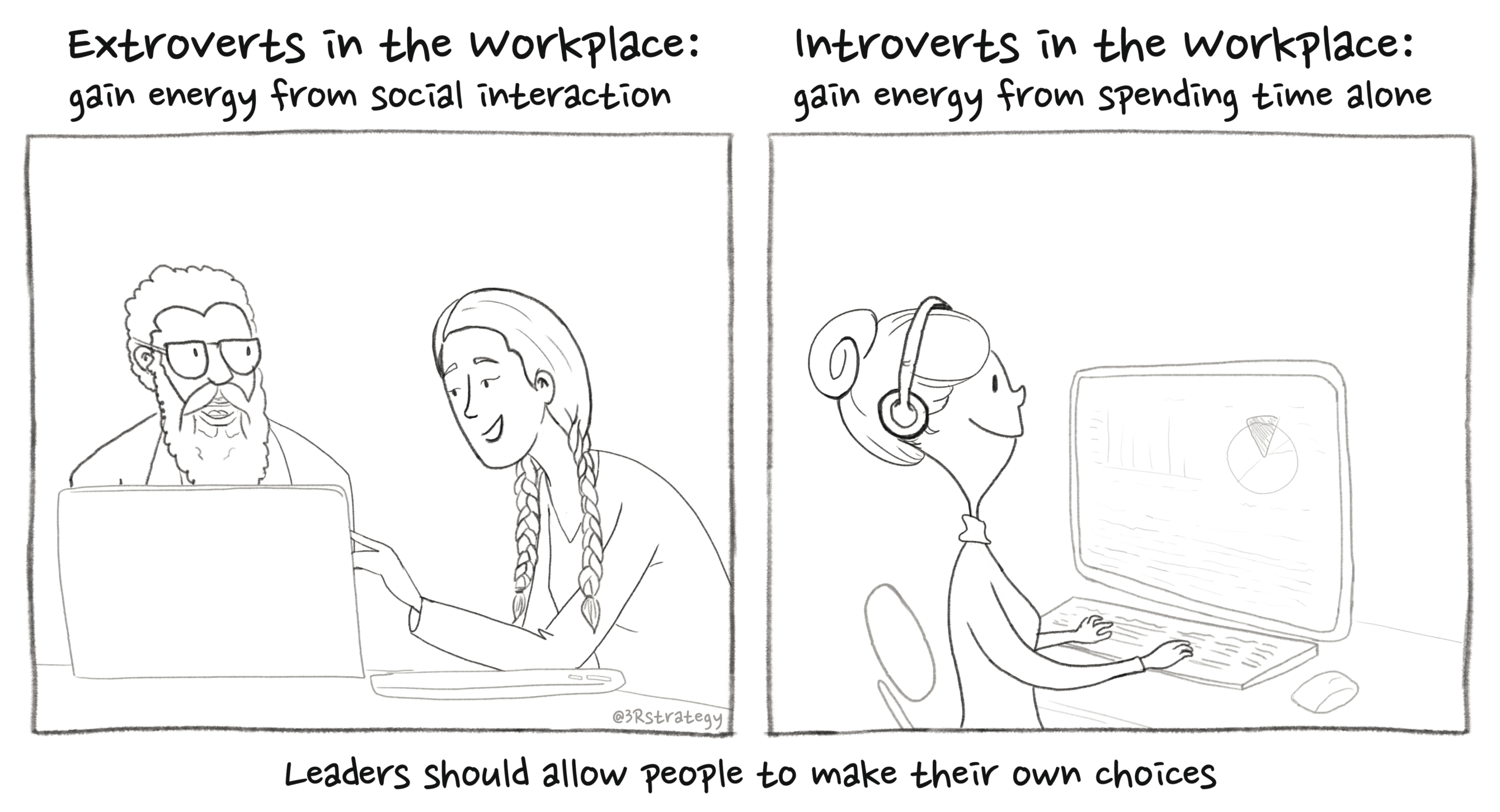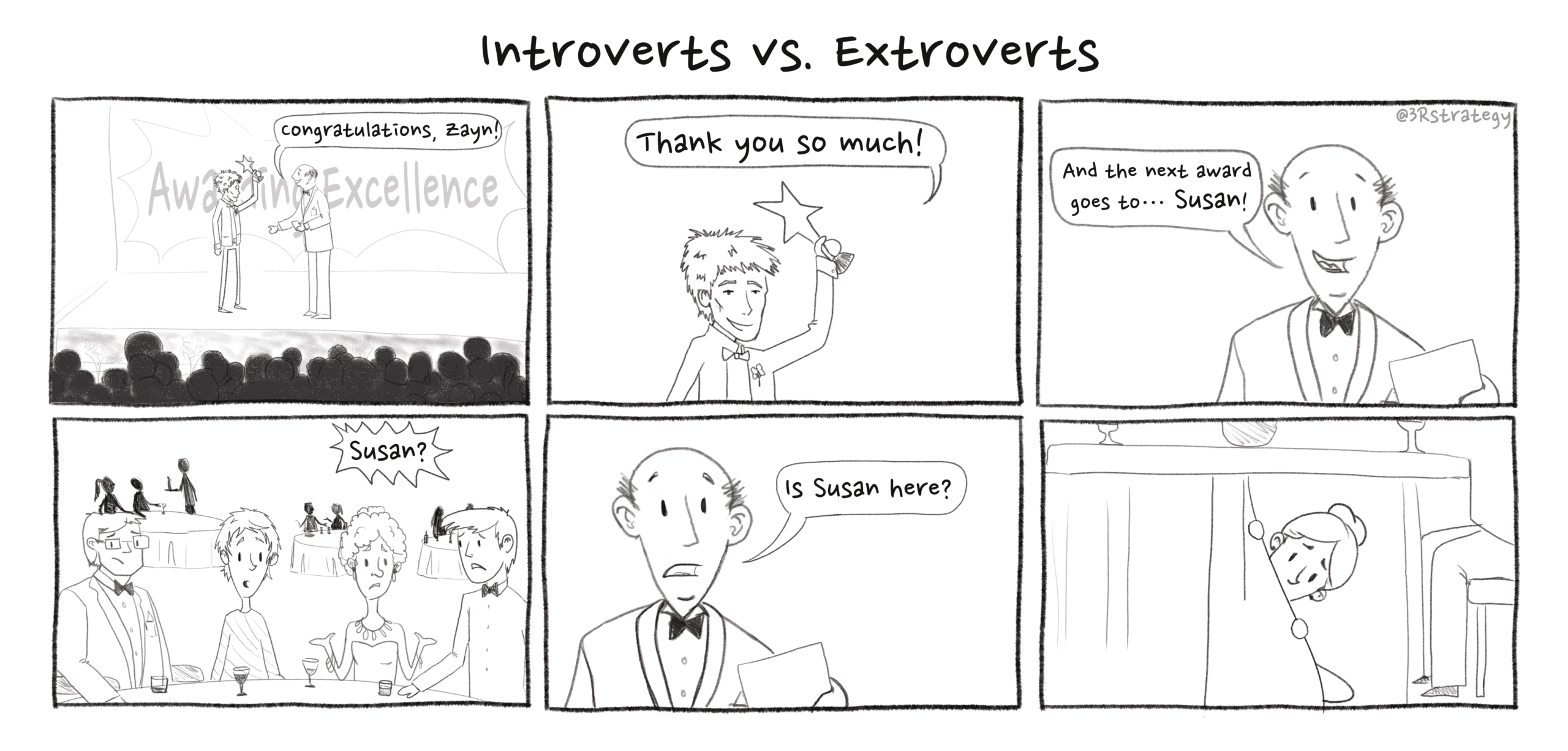Recognition strategies play a crucial role in fostering a productive and harmonious team environment. However, it’s important to recognise that introverts and extroverts have different preferences and needs when it comes to recognition in the workplace.
As a team leader or manager, understanding this and adapting your approach accordingly can lead to a more inclusive and effective recognition program.
In this article, we will explore various recognition strategies that cater to the unique requirements of your employees, ensuring that every team member feels valued and appreciated.

Assessing Personality
The first step is to understand the personality types of your team members. While formal tools like the Myers-Briggs Type Indicator (MBTI) can provide valuable insights, informal methods such as open discussions about work styles, communication preferences, and energy sources can be even more useful.
The goal is not to label or stereotype individuals but to recognise their distinct needs and preferences.
Creating Your Workspace
A lot of modern office spaces ignore some people’s basic necessity for peace and quiet. Unlike extroverts, introverts can get easily overwhelmed by the constant chatter and movement of an open-plan workspace.
Before we think about larger recognition strategies, it is important to consider the ways we interact with employees day-to-day.
Social Boundaries
For example, making the effort to create quiet rooms or spaces that introverts can use to complete projects or take time out can make them feel comfortable. It reassures them that their needs are being catered to.
Remote work is also often more desirable for introverted colleagues. However, we have to think about the extroverts who may then be missing out on the more social environment of an office.
It’s important to remember that both personality types can work well together. Extroverted individuals will often encourage their peers to speak up, share ideas and take part in open discussions, while introverts can bring a more detail-orientated approach that is crucial for process-driven projects.
With this in mind, leaders should actively encourage collaboration through online meetings, group chats and brainstorms. This will allow your workplace to cater to each personality type while allowing individuals to find the best space and conditions for them to be successful.
Effective Communication Strategies
Communication plays a crucial role in recognising and appreciating the contributions of all our employees.
It’s all about embracing diversity. Extroverts might like open discussions, brainstorming sessions, and other group activities. While this can be brilliant for coming up with immediate solutions, you need to give introverted employees a chance to speak up too.
Organising one-on-one meetings or calls with those employees who appear left behind or disengaged demonstrates your acknowledgement of their differing needs. You might be surprised at the level of insights and contributions they can bring to the table when given the chance.
Actively listen to them and allow them to fully express themselves without interrupting their train of thought.
Motivation Techniques
Motivating team members based on their personality type is essential for collaborative success. Recognise that introverts may value recognition through autonomy, learning opportunities, or private acknowledgements.
In contrast, extroverts may thrive on public praise, incentives, or social activities. Challenge introverts with new problems or perspectives, and expose extroverts to new people and experiences to keep them engaged and motivated.
Bespoke Recognition Strategies
Introverted workers will feel appreciated and driven when recognition is catered to their specific needs. This will prevent them from being overwhelmed by an excessive amount of attention.

Things like written thank you notes, gift vouchers sent via email or an acknowledgement of their performance within the wider team are all ways of rewarding introverts.
Furthermore, taking the time to recognise and appreciate coworkers can be a great benefit to both employees and employers. Peer-to-peer recognition is a fantastic way of ensuring extroverted individuals still recognise their colleagues’ contributions, despite them not working in the same way.
Similarly, it reduces the need for public recognition that may make introverts feel uncomfortable. Face-to-face feedback is more likely to be received positively and caters for both personality types.
Conclusion
By understanding the unique needs and preferences of each personality type, you can tailor your recognition efforts to ensure that every team member feels valued and appreciated. This can help boost engagement levels and motivation—contributing to the overall success of your team.
Recognition for introverts in the workplace can lead to a stronger team dynamic. By supporting each other’s needs, extroverts and introverts can create a collaborative environment. Embrace the diversity of your employees and create a workplace that celebrates the strengths and contributions of all employees.

